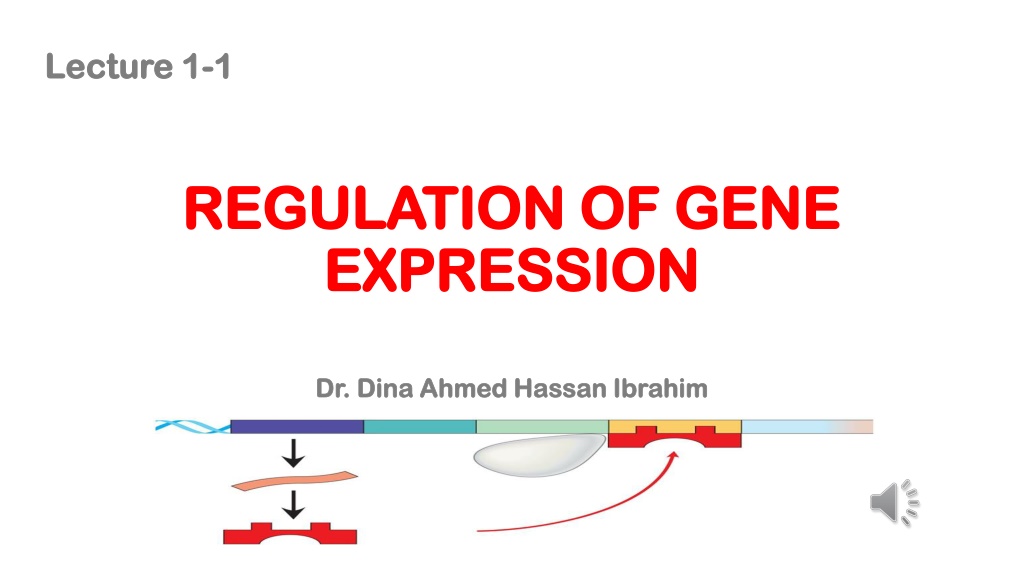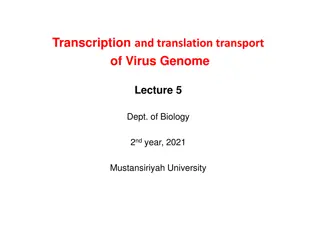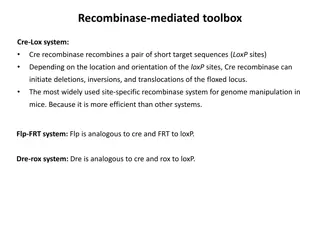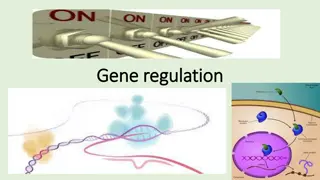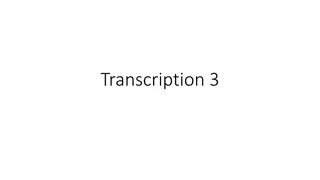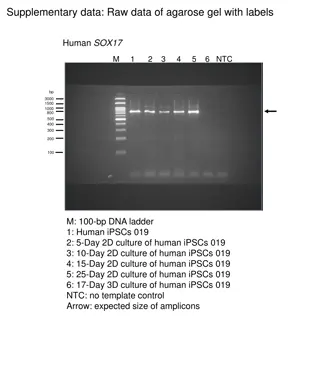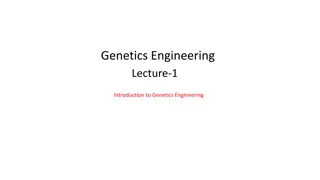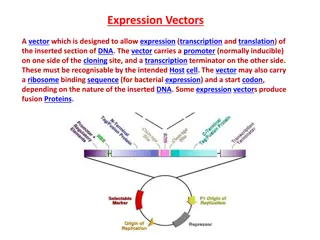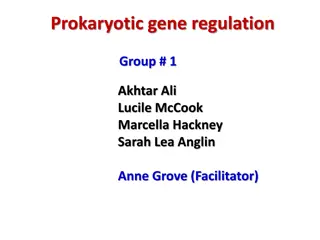Understanding Gene Expression Regulation in Prokaryotes and Eukaryotes
Gene expression is a crucial process that leads to the production of functional gene products like RNA and proteins. This article explores the regulation of gene expression in both prokaryotes and eukaryotes, covering the importance of regulating gene expression, types of regulation elements, specific examples like the Lac operon, and the role of cis-acting and trans-acting molecules. Additionally, it delves into why regulating gene expression is essential for adaptation, development, and differentiation in various cell types.
Download Presentation

Please find below an Image/Link to download the presentation.
The content on the website is provided AS IS for your information and personal use only. It may not be sold, licensed, or shared on other websites without obtaining consent from the author. Download presentation by click this link. If you encounter any issues during the download, it is possible that the publisher has removed the file from their server.
E N D
Presentation Transcript
Lecture 1 Lecture 1- -1 1 REGULATION OF GENE REGULATION OF GENE EXPRESSION EXPRESSION Dr. Dina Ahmed Hassan Ibrahim Dr. Dina Ahmed Hassan Ibrahim
Contents: Contents: Definition of gene expression & importance of regulating gene expression. Types of regulating elements. Regulation of gene expression in Prokaryotes: Lac operon as an example. Regulation of gene expression in Eukaryotes.
GENE EXPRESSION GENE EXPRESSION Gene expression refers to the multistep process that ultimately results in the production of a functional gene product: either RNA or protein.
REGULATION OF GENE EXPRESSION REGULATION OF GENE EXPRESSION Regulation of gene expression includes a wide range of mechanisms that are used by cells to increase or decrease the production of specific gene products (protein or RNA). The main site of control of gene expression in both prokaryotes and eukaryotes is the transcription of DNA into RNA.
In eukaryotes gene expression involves extensive post-transcriptional and post-translational processes. Each of these steps can be regulated to provide additional control over the kinds and amounts of functional products that are produced.
WHY REGULATING THE GENE EXPRESSION WHY REGULATING THE GENE EXPRESSION? ? All somatic cells have the same genetic information but we have different tissue structure and function. This is due to differential expression of genes. Regulations of gene expression is required during adaptation, development and differentiation.
CIS CIS- -ACTING ELEMENTS VS TRANS ACTING ELEMENTS VS TRANS- -ACTING MOLECULES MOLECULES ACTING Cis acting elements: These are DNA sequences flanking a gene. They influence expression of genes located on the same chromosome. Trans-acting molecules These are regulatory molecules which can diffuse through the cell from its site of synthesis to its DNA-binding site.
CONSTITUTIVE VS INDUCIBLE GENES: CONSTITUTIVE VS INDUCIBLE GENES: Constitutive genes: They encode products required for basic cellular functions. They are continually expressed at constant rate (housekeeping genes).
Inducible genes: Are regulated genes expressed only under physiologic need. They may be expressed in all cells or in only a subset of cells expressed only when an inducer or activator is present.
TYPES OF GENE REGULATION TYPES OF GENE REGULATION Positive regulation: Require the presence of anactivator or inducer: A specific regulatory element which quantitatively increases the expression of genetic information. Negative regulation: Achieved by the presence of a repressor: A specific regulatory element which diminishes the expression of genetic information.
REGULATION OF GENE EXPRESSION IN REGULATION OF GENE EXPRESSION IN PROKARYOTES PROKARYOTES Genes involved in a metabolic pathway are present in a linear fashion (operon) Each operon is controlled by a single control sequence in the DNA (single promoter). Genes are clustered on the chromosome in form of operon and are transcribed together and then translated together (polycistronic genes)
LACTOSE OPERON OR LAC OPERON LACTOSE OPERON OR LAC OPERON Lac operon: A coordinated unit of gene expression to make enzymes required to transport and metabolize lactose. (E.coli)
STRUCTURE OF THE LAC OPERON STRUCTURE OF THE LAC OPERON Consists of three regulated genes (induced) involved in the catabolism of lactose: lacZ gene: Codes for -galactosidase which hydrolyzes lactose to galactose and glucose lacY gene: Codes for a galactoside permease, which facilitates the movement of lactose across the bacterial cell membrane lacA gene: Codes for thiogalactoside transacetylase, which acetylates lactose. The physiologic function of this acetylation is unknown.
REGULATION OF THE LAC OPERON REGULATION OF THE LAC OPERON The regulatory portion of the operon is upstream of the three structural genes and consists of: Promoter region (P): where RNA polymerase binds. Lac repressor promoter (Pi): Transcription of Lac repressor protein. Operator (O) site: binds the repressor to block the transcription of the Lac operon genes. Catabolite activator protein binding (CAP) site: where regulatory proteins bind. Regulatory gene (lacI gene): codes for the repressor protein.
LacZ, lacY, and lacA genes are expressed only when the O site is empty, and the CAP site is bound by a complex of cAMP and the catabolite activator protein (CAP) also called the cAMP regulatory protein (CRP). LacI gene has its own promotor. It codes for a trans- acting factor (protein) that binds to the O site with high affinity and blocks transcription. LacI is a constitutive gene.
REGULATION OF LAC OPERON REGULATION OF LAC OPERON E.coli depend on glucose as a source of energy and carbon. In absence of glucose, E.coli can use lactose as source of energy and carbon. https://youtu.be/AVuj0q4mKa8
If glucose is available in the surroundings, does it make sense for the lac operon to be ON? If it s a waste of energy then how do bacteria repress (turn OFF) the Lac operon?
1. When glucose is present & lactose is absent: Negative regulation: The lac operon is repressed. Repression is mediated by the repressor protein binding to the operator site which is down-stream of the promoter region. Binding of the repressor interferes with the progress of RNA polymerase and blocks transcription of the structural genes.
